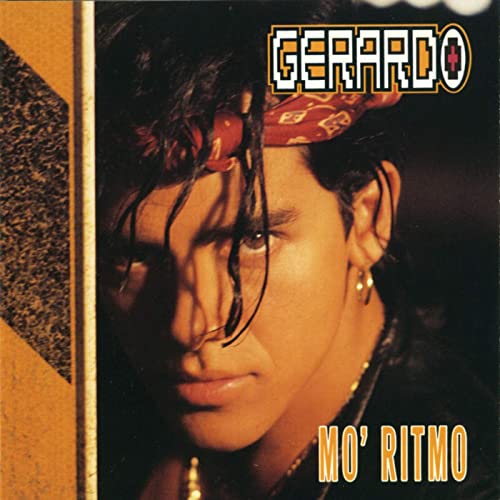There was a time in my life that I was so broke I couldn’t afford a cassette single for “Rico Suave.” A friend and I were at MusicLand (the Sam Goody of the Midwest) and being that he was as broke as me, we came up with an innovative plan on the spot. We’d pool the money we had, buy the single, and immediately dub off a copy. One person would keep the sleeve for the cassette single, and one person would keep the actual tape, so we’d each have half of the purchase while both would have a copy to listen to.
If you’re wondering why we went to such lengths for a one-hit wonder, perhaps you need to know that the song is included on “Mo’ Ritmo” but the album cost THREE TIMES what the cassette single did. Neither of us wanted to make that investment when “Rico Suave” was the only song we were interested in, and as far as Gerardo is concerned, that’s how the public felt too. It’s not that he didn’t try to copy the bilingual success of the song with a second track called “Latin Till I Die (Oye Como Va),” and if you didn’t already guess it from the title it blatantly copies Santana’s “Oye Como Va” for both its sound and its hook.
This blatant lack of creativity was a recurring problem for Gerardo on single after single. “We Want the Funk” is such a blatant cover of Parliament’s “Give Up the Funk (Tear the Roof Off the Sucker)” that George Clinton and company are credited in the liner notes. That means they got a sample clearance fee AND mechanical royalties for the song, and given Gerardo’s popularity in 1991, I’m sure they were happy to cash in on his rapid ascent to the top of the charts.
For Gerardo Mejía there was nowhere to go but down after “Mo’ Ritmo.” Although he released four albums from 1991-95, “Mo’ Ritmo” was the only one that charted commercially, and he changed records labels after the second. Eventually he wound up working behind the scenes at Interscope Records, where he allegedly introduced the people at the label to a young Enrique Iglesias, before Iglesias went on to be far more successful than Gerardo could even dream of. That story seems apocryphal to me though and suggests Gerardo is looking for any wagon he can hitch his name to so he’d be remembered for something besides “When the Lights Go Out.”
This is ultimately what ruined Gerardo for me and my friend. “Rico Suave” is a funny and funky song about a guy who is constantly looking to get laid. Judging by his looks in this video, that probably wasn’t a problem, but “When the Lights Go Out” shoves it in your face in a way “Rico Suave” does not. There’s a very clear market he’s going for here and even back then we called it “Latin heartthrob.” There’s a fine line to walk between being a cool guy with a novelty single and blatantly selling your body to women so they’ll buy magazines and posters with your face on them. I’m sure he would have sold Gerardo cologne to them too if someone offered him a deal. Hell I’ll be shocked if that didn’t actually exist for a year or two, but I never wore it. I’ve never been much into cologne anyway.
With or without the shameless self-whoring Gerardo did, “Mo’ Ritmo” isn’t a good album. Every song is a blatant attempt to come up with another “Rico Suave” without realizing what a lightning bolt in pop culture that song was. “Fandango” wasn’t going to do it, “En Mi Barrio” wouldn’t do it, and “The Groove Remains the Same (Mo’ Ritmo)” certainly wouldn’t. If I have to say something positive about Gerardo it’s that I have no doubt he’s proud of his Ecuadorian roots and Hispanic heritage. That part of his personality wasn’t cooked up in a laboratory by a record executive, but sadly nearly EVERY OTHER THING IS including his blatant attempt at sex appeal. That pooling of resources to buy “Rico Suave” turned out to be a very good investment, because even today it’s the only part of “Mo’ Ritmo” that matters.

